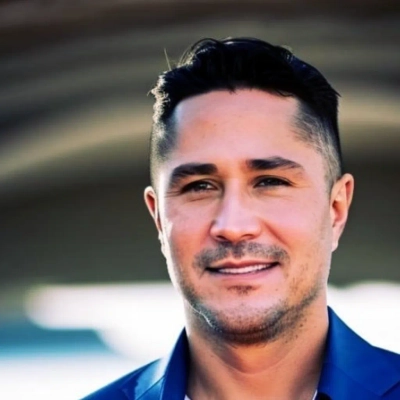How Do Cmos Structure Marketing Teams to Achieve Business Objectives?
Marketing team structures can make or break a company's success in achieving its business objectives. This article delves into the strategies employed by Chief Marketing Officers (CMOs) to organize their teams for maximum impact. Drawing on insights from industry experts, it explores various models such as lean senior squads, growth-focused teams, and framework-driven pods that drive revenue goals and enhance marketing efficiency.
- Lean Senior Squad Drives Revenue Goals
- Growth Squads Boost Measurable Outcomes
- Small Teams Achieve More With Less
- Customer Journey Stages Guide Team Structure
- Hub-and-Spoke Model Aligns With Objectives
- Framework-Driven Pods Enhance Marketing Efficiency
Lean Senior Squad Drives Revenue Goals
I structure marketing as a lean, senior-only squad tied directly to revenue goals. We have clear owners for acquisition, lifecycle/CRM, and marketing ops, each empowered to ship end-to-end with no extra layers. The heartbeat is our cadence with Sales: weekly pipeline huddles, shared dashboards, and quick loops with reps to adjust messaging and spend. This keeps us close to buyers, preserves CAC efficiency, and maintains a steady flow of qualified opportunities. In practice, it helped us prioritize fewer, higher-leverage plays, lift win rate, and shorten feedback cycles from weeks to days. As we grow, I'd layer in enablement and deeper analytics while keeping the core intact: senior talent, tight Sales partnership, and a direct line to revenue.

Growth Squads Boost Measurable Outcomes
The most effective way I've structured a marketing team is by building it around growth squads instead of rigid departments. Each squad owns a specific objective—acquisition, retention, or brand—and has cross-functional talent built in, from content to analytics. This setup breaks down silos, speeds up execution, and keeps everyone accountable to a measurable outcome instead of a vague deliverable. When I rolled this out, our acquisition squad cut CAC by 25 percent while the retention squad boosted customer lifetime value by double digits. The structure worked because it turned the team into an engine of business growth, not just a group producing marketing collateral.
Small Teams Achieve More With Less
The most effective structure I've used is building small, nimble teams instead of bloated departments. At my travel company, I had 50 employees, and growth felt heavy—every new customer meant another hire. When I downsized to a lean team of five at Strategic Pete, execution sped up, creativity flourished, and we achieved more with less.
I focus on three roles:
1. Strategist - sets direction and ensures all tactics ladder up to business goals.
2. Operators - manage execution and project tools like Asana or Trello to keep the machine running.
3. Creators - video, copy, design—the people who make the message tangible.
This structure helped us double ROI for a client who had 10 agencies underperforming. By aligning everyone under one strategist and making operators accountable for process, we cut wasted effort and streamlined campaigns.
Lean teams win because clarity and speed beat size every time.

Customer Journey Stages Guide Team Structure
We restructured our team around customer journey stages rather than traditional channels like "social media" or "content." Each specialist owns a journey phase: awareness, consideration, decision, and retention. This eliminated the silos where our social media manager would create content without understanding conversion goals. When we launched a SaaS client's new feature, our journey-based team increased qualified leads by 180% because each specialist optimized their phase while maintaining message continuity. The structure works because it forces collaboration and ensures every piece of marketing serves the customer's progression rather than individual channel metrics.
Hub-and-Spoke Model Aligns With Objectives
The most effective way I've found to structure a marketing team is around a hub-and-spoke model, with clear ownership across demand generation, product marketing, brand/communications, and revenue operations, all tied together by a central strategy function. This ensures each team is specialized and accountable, while still fully aligned with revenue and growth objectives.
For example, at Everyware, I built a structure where demand generation and product marketing partnered tightly with sales, while brand and PR drove market authority, together increasing ISV and direct revenue by 125% year over year. At Bitcoin Depot, a similar structure allowed us to scale DTC demand generation while supporting B2B expansion, contributing to revenue growth from $245M to $690M.
By balancing specialization with cross-functional alignment, the team could move fast, measure impact, and directly connect marketing activity to business outcomes.

Framework-Driven Pods Enhance Marketing Efficiency
As CMO, I've found the most effective way to structure a marketing team is by organizing it around my proprietary frameworks, rather than traditional functions. Instead of siloing roles into "social," "PR," or "content," I build pods. Each pod owns its pillar end-to-end—so one group drives visibility through media, another through dual-channel digital exposure, and another ensures brand clarity and conversion. This framework-driven model creates alignment, eliminates redundancy, and keeps the team focused on the outcomes that matter most to the business.
This structure has directly helped us achieve specific objectives, such as scaling client visibility while maintaining high quality. For example, during a pivot, the PRISM pod focused entirely on optimizing media placement strategy while the STAND OUT pod refined messaging for conversion. Because the structure was tied to frameworks, each team understood the "why" behind their work and could adapt quickly. The result was higher client retention, more measurable results, and a marketing engine that scaled without becoming bloated. It's unconventional compared to traditional org charts, but it ensures every role connects back to our intellectual property, which is our strongest competitive advantage.




